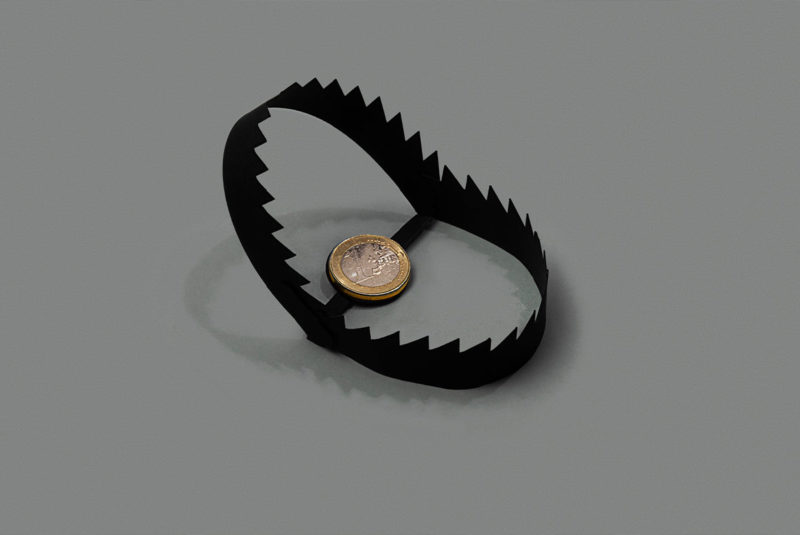Ready To Buy a Home?
Get Approved to Buy a Home
Rocket Mortgage® lets you get to house hunting sooner.
If you’re deep into the process of getting a mortgage, that means you’ve already talked to a loan officer who helped you find the right mortgage (yay!). You filled out the mortgage loan application and handed over any requested documents to the mortgage loan officer.
Maybe you’ve been told that your application is with the loan processor. But who is that and what does a loan processor even do?
We can clear up all your burning loan processor questions – everything from what a loan processor does to how their job is different from the jobs of two other key players in the mortgage loan application process: the loan officer and the underwriter.
The Main Steps of the Mortgage Application Process
As much as we may wish it to be, we can’t snap our fingers or wrinkle our noses and make a new home suddenly appear. Buying a home takes lots of steps – from assessing your finances and finding a real estate agent to closing and moving in. And each of these bigger steps comes with smaller steps.
The mortgage application process has three main steps: loan origination, loan processing and underwriting. Each step requires a specific person on the lender’s team to take the lead – the mortgage loan officer, the loan processor and the underwriter.
If the mortgage application process was a sandwich, the loan officer and the underwriter would be the bread. The loan officer would be the top slice and the underwriter would be the bottom slice. The loan processor would be the filling of your choice (think: PB&J, tuna, maybe pastrami) squished between the two slices.
All three components work in mouth-watering harmony to build the sandwich – yet each is distinct from the other.
What Is a Loan Processor?
A loan processor, or mortgage loan processor, is the link between the loan officer and the underwriter. The loan processor assembles the financial data and documents needed for the mortgage loan, makes sure they’re completed correctly and ensures that all deadlines are met.
A day in the life of a loan processor
Let’s get granular! A loan processor’s basic job duties include:
- Compiling financial documents: Getting a mortgage means collecting a lot of information and keeping track of it. While the loan officer collects the documents from the borrower, the loan processor reviews them and makes sure they contain the necessary information. What documents are collected will vary by mortgage lender, but lenders generally want paperwork that verifies who you are, where you live and what your finances look like. This includes your Social Security number, proof of address, tax returns, bank statements and proof of income. If you’re applying for a mortgage loan with extra requirements, like a Department of Veterans Affairs (VA) home loan or U.S. Department of Agriculture (USDA) loan, the loan processor will make sure any extra paperwork is included with your mortgage application.
- Reviewing credit reports and credit scores: Loan processors comb through your credit report. They pay particular attention to your payment history and look for things like late payments or loan defaults, as well as anything questionable.
- Confirming provided information: The loan processor verifies the information you’ve submitted with third parties, like employers and credit bureaus.
- Determining the need for additional information: If necessary, the loan processor will request additional paperwork. If there are negative marks on your credit report or there’s been a drop in income, the loan processor may want to add a letter of explanation to your mortgage loan file.
- Keeping track of action items and deadlines: Loan processors make sure everything that needs to happen is done on time, including the home appraisal, submitting the home purchase offer and, if you opt for one, the home inspection.
- Passing the file on to the underwriter: Once all the paperwork has been collected and checked, it’s ready for underwriting. (More on this in a minute.)
Now that we know what mortgage loan processors do all day, let’s take a look at how it’s different from the other two main steps of the mortgage application process.
The Loan Processor vs. The Loan Officer
Contrary to popular belief, they aren’t the same thing.
Remember, the loan officer is the top slice of our mortgage-application-process-as-sandwich analogy. The loan processor’s job is the second step (aka the sandwich filling).
Loan officers are sometimes referred to as loan originators. They are the first person you meet to begin the mortgage loan application process.
Loan officers outline mortgage loan options and help you choose a loan that fits your needs and your budget. The loan’s terms, which include the interest rate and any fees, are explained in detail by the loan officer.
The loan officer collects all your requested documents and helps you fill out the loan application. Once the loan application is completed, the loan officer passes the proverbial baton – as well as your documents – to the loan processor.
The Loan Processor vs. The Underwriter
Loan processors make sure your documents are complete and accurate, ensuring that they meet the lender’s requirements. In short, the loan processor gets everything ready to be passed along to the underwriter.
Underwriters get into the nitty-gritty of your finances and your credit history to decide whether you qualify for the loan or not. If it’s a “yes” from the underwriter, the loan will get the thumbs up and be clear to close.
Get Those House Keys
It takes a lot of work to buy a home, but the process is worth the feeling of those house keys squeezed into the palm of your hand. Help make your life and your loan application process easier by getting organized ASAP.
While we can’t make any promises, having your paperwork organized and easily accessible will help make each step of the process – from origination to processing to underwriting – a smoother walk to the front steps of your new home.
Get approved to buy a home.
Rocket Mortgage® lets you get to house hunting sooner.
The Short Version
- The mortgage application process has three main steps: loan origination, loan processing and underwriting
- The loan processor makes sure all mortgage loan documents are in order and all action items and deadlines are met
- The underwriter approves (or denies) the loan




